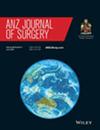Telehealth after lockdown: evaluating a regional urological telehealth service before and after the pandemic
Abstract
Background
The COVID-19 pandemic facilitated the rapid uptake of telehealth Australia wide. To date, no studies have analysed patient perceptions of a regional urological telehealth service before and after the pandemic. With over 10 years of experience delivering telehealth to Southwest Victoria, we aim to highlight the benefits, limitations and progress of a regional urological telehealth service.
Methods
Regional patients living within Western Victoria who participated in our 2017 survey and continued their urological telehealth consultations throughout 2021–2023 were invited to participate in our 2023 survey. Questions were both short answer and multiple choice. Seventy-eight patients met inclusion criteria, and 42 responses were returned. Data analysis utilized a mixed methods approach.
Results
Overall patient perceptions were favourable in 2017 and improved throughout the Pandemic. The greatest improvements were seen within the performance areas: overall satisfaction, technological aspects, comprehension and financial benefits. Following the pandemic, the distance patients were prepared to travel for face-to-face reviews decreased and preferences for telehealth compared to face-to-face consultations increased by almost 20%. However thematic analysis revealed loss of personalized care, technological faults, fixed beliefs and unsuitable appointments as limitations of this model of care.
Conclusion
Patients' perspectives of a regional urological telehealth service were overwhelmingly positive highlighting the vital place of urological telehealth in the delivery of equitable urological healthcare to a regional population. Overall, post COVID-19 there were improved patient perceptions of a telehealth service and its role in providing regional patients with the provision of timely, supportive and high-quality urological care.


 求助内容:
求助内容: 应助结果提醒方式:
应助结果提醒方式:


